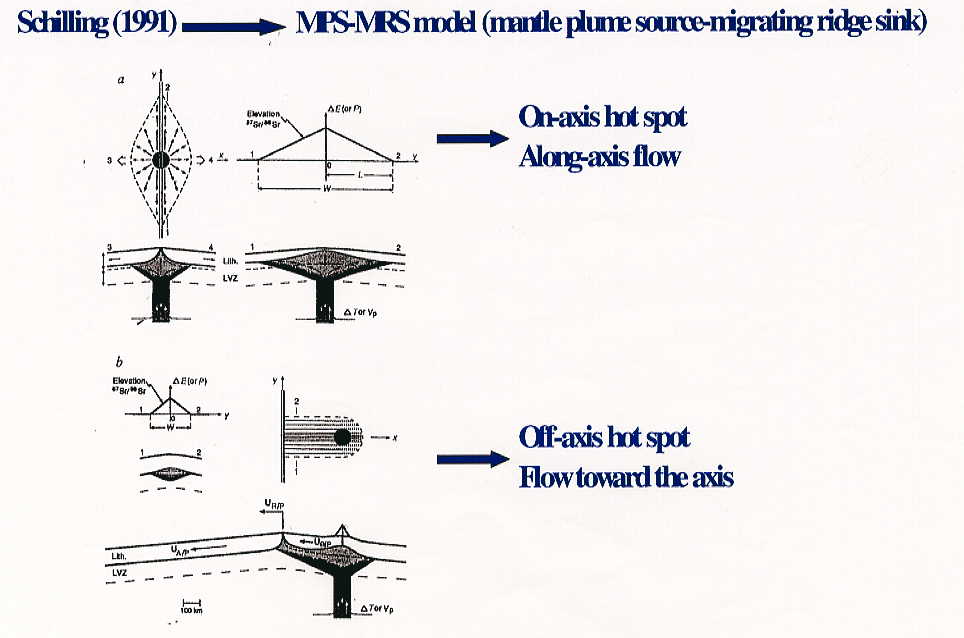
Figure 1

Figure 2 illustrates different scenarios for hot-spot and spreading centre interactions. Properties that have been observed when a hot-spot is arranged directly below a spreading centre includes: high topography, increased crustal production resulting in crustal thickening thus creating a plateau. The Galapagos spreading centre was the example given by Maria Maya. Meanwhile, instances when hot-spots and spreading centers are juxtaposed, geochemistry and geomorphology depend on the relative motion between the hot-spots and spreading centres. For example, a reduction in crustal production (rifting) and plate-rigidity accompanies spreading centres that move away from hot-spots. Generated magmas, in this case, are generally enriched in Pb and other incompatible elements. An example of a spreading centre moving away from a hot-spot is the Azores-MAR system. On the other hand, the Foundation-PAR system is characterised by non-linearly mixed magmas over time and shallow topography.

Authors: Nonotte, P. and Griffiths, J.